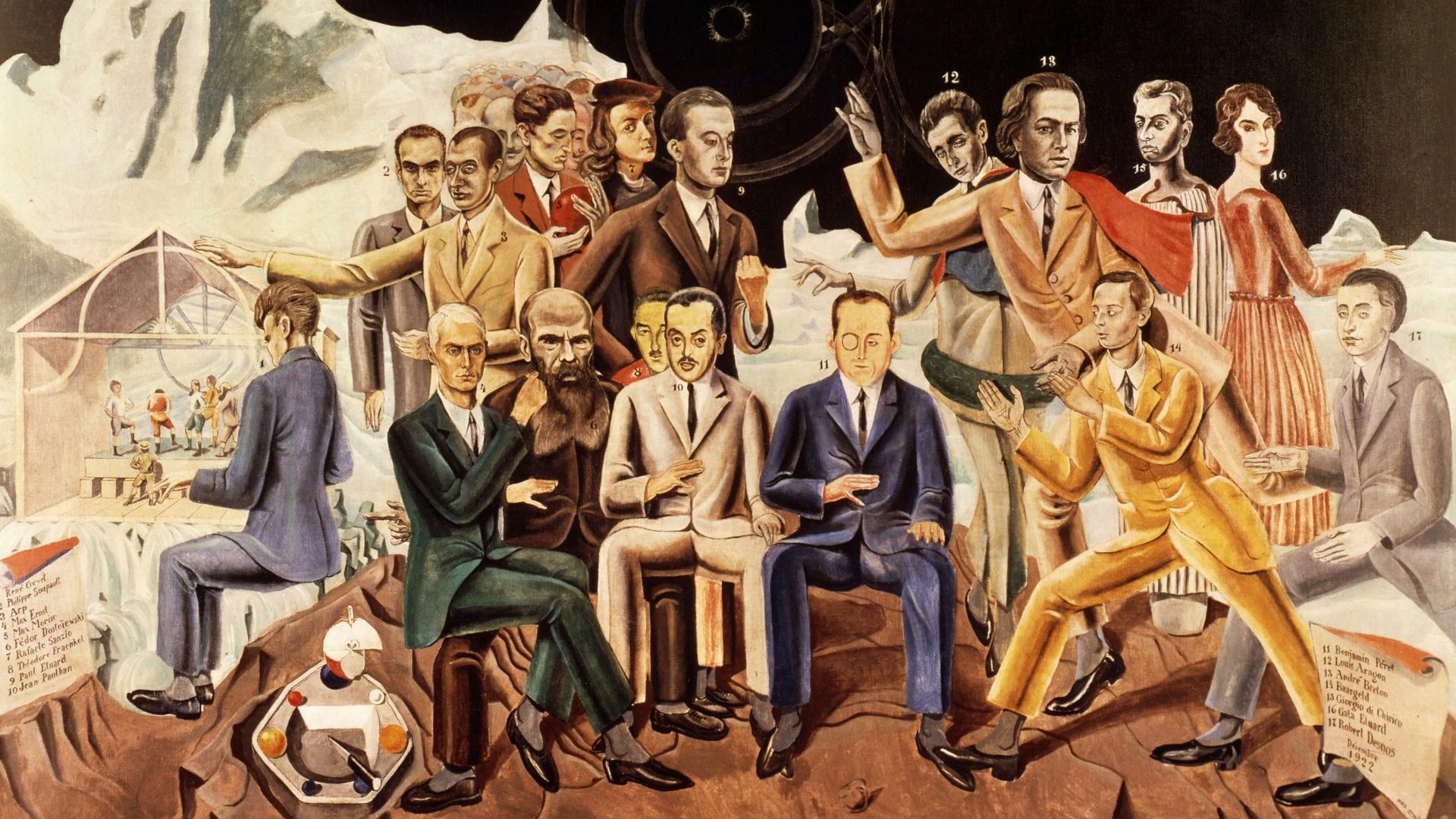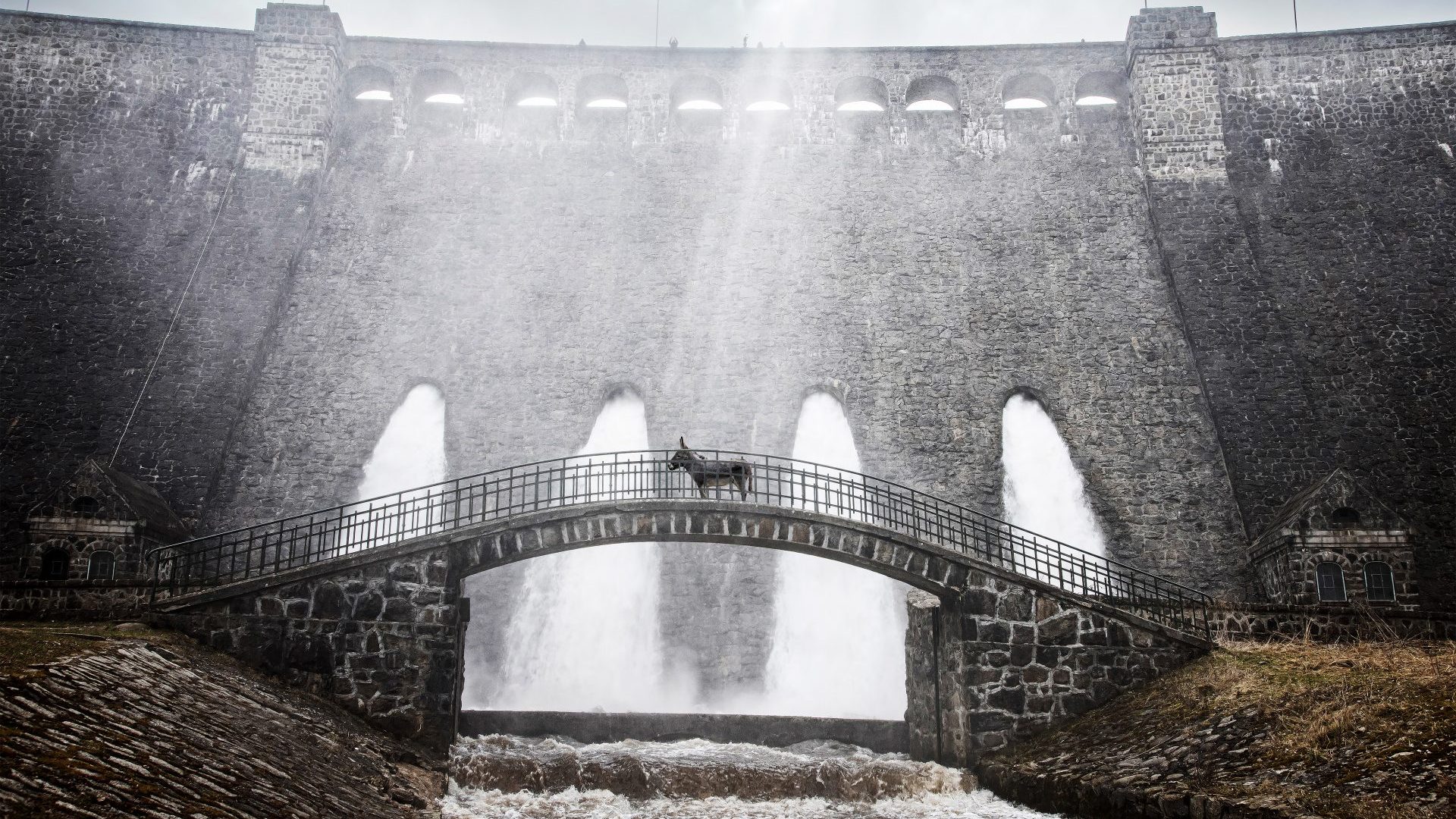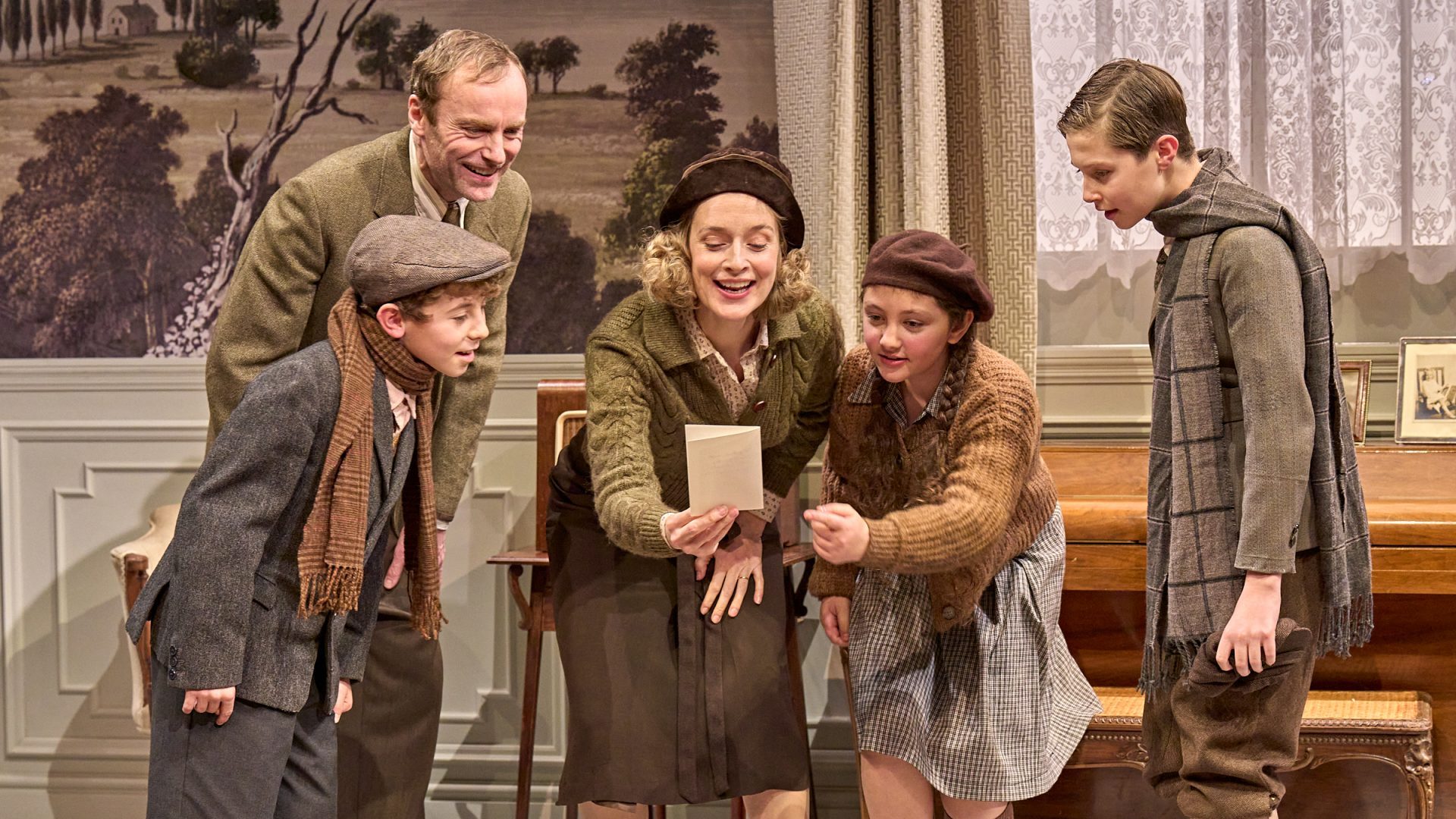What would you do if you had your wife stolen by Salvador Dalí? Paul Éluard’s answer was to vanish, telling no one. One day, in March 1924, Éluard disappeared. Neither family nor contemporaries could vouch for his whereabouts. Reports of his death spread through Paris.
Horribly weary and deceived, he had wanted to fly from himself, to forget. It
was a long trip: setting sail from Marseilles to Tahiti, Indonesia, and Ceylon. After seven months as a vagabond he joined a Dutch cargo ship in Singapore that took him back to Marseille.
And Dalí? He and Éluard’s former wife, Gala, lived happily ever after. (Orwell called Dalí a “despicable human being”.)
Paul Éluard (born Eugène Émile Paul Grindel; 1895-1952) was one of the founders of the surrealist movement. He is well known in France as one of the greatest love poets of the last century, but largely unknown in this country, though the ignorance of Brits is not for lack of merit. He is mostly taught today to French high-schoolers or lycéens with focus usually on the “pure”, “radiant”, and “innocent” qualities of his writing.
But this is only one side of Éluard: a political firebrand with left leanings, he grew up and watched as democracy, fascism and communism all promised to set people free, while moving by stealth to enslave and control. He was also a champion of surrealist practice, mining the subconscious for artistic insight. Last November marked 70 years since his death. Now is the time to
reassess his significance, legacy and continued importance, with populism
threatening to undermine voices of cultural dissent.
Can poetry be a political force? Or does it, as Auden suggests, “make nothing happen”? Are love and surrealism opposed to political action, engagement? Éluard’s life and work illustrate deftly that love and political belief are intimately connected, and that poetry can be a potent force, a wellspring we can draw on to engage with the world as it is, enlarge our spirit and fight injustice.
How do we square Éluard the sensitive serenader with the subconscious
subversive, with the militant class-warrior? How can the poet who wrote
“Rapture lies lightly on our senses come together / Like the dawn of our dream”, also write “the earth is blue, like an orange” or “elephants are contagious”, then also write “the potion of injustice and the potion of shame / are really too bitter… let us not wait a single moment to take up our hands / let us take the earth by storm”?
To the avant garde in the early 20th century, social change and artistic method were locked in a mutual dance. Today, too easily we view both as wallflowers, shyly shuffling on the margins until tempted, as if by a flash
of unexpected confidence, on to the dancefloor of mainstream culture, and then only fleetingly.
It would be easy to see why modern educators would whitewash Éluard’s
politics in favour of the more palatable and accessible themes of love. The
poet’s idealism and naivety led him, like many others, to believe that Stalin was a force for good. More agreeably, he was also the author of several poems against nazism that circulated clandestinely, and became known worldwide as The Poet of Freedom. Perhaps these very complexities are what makes love endure longer. It is an easier sell.
And what of surrealism? Can it be a political tool? Surely it is a kind of escape from reality, a different perspective, looking at things differently in order to illustrate an absurdity. To most of us, our mind’s eye brings Dalí’s paintings, dreamlike, warped, playful yet eerie juxtapositions, both sober and frivolous, gently unhinged yet now (through the art world) respectable. GCSE art and popular culture have stripped surrealism to mere style and form.
At the time, the shock of surrealism was seen as its eroticism, made vividly clear in The Design Museum’s current exhibition Objects of Desire, where you can see a sofa in the shape of giant red lips, a teacup made of animal fur, an
iron laced with nails. The Dada movement and then surrealism caused many a tut of disapproval in the 1920s art world. We have Freud to thank partly for the interest in the subconscious, and from that Pandora’s box came images polite society did not care to see. Doubtless respectable mothers would have pulled their children away from such things in haste.
We’ve come a long way since Freud and paintings of suggestive statues in barren desert landscapes. In the 21st century we are beginning to celebrate
neurodiversity and welcoming “outsider art” into the mainstream. From the
excessive, dotty exuberance of Yayoi Kusama to the whimsical glazed alien forms adorning the Hayward Gallery’s new show, Strange Clay, being weird is, well, normal. You might even call it a second “inward turn”.
Yet rightfully seen in context, surrealism was more than weird for the sake of weird – it represented a counter to fascism. The first surrealist group manifesto was launched by André Breton in 1924, which declared “(sur)realism is not some new, easier means of expression, it is a total liberation of the mind… we are committed to making a revolution.” Freeing the mind may evoke to us Aldous Huxley’s The Doors of Perception or lackadaisical dropouts from the 1968 Summer of Love. A slightly more voguish term today is “unlearning”. But at its core, the urge to break free from rational thinking is to shake off the dreaded words “the way things are
done”.
Freedom artistically (surrealism as only one form) meant no reneging of responsibility, Éluard “insisting on the deepest sense of responsibility inherent in every act of creativity”. His “productive tension” between “communist-framed social realism and the ultimately co-optable aestheticism of surrealist experimentation” persisted, and this tension bore fruit.
Nonetheless a tension remained between Éluard’s politics and this kind of mind-loosening urge. Éluard and Breton “pursued a not particularly Marxist, but very surrealist interest in automatic writing”… producing The Immaculate Conception “with delirious paradoxical formulation”, unbridled from the formal grammar of ‘normal’ life. Later in the 1940s Éluard spent many summers with Picasso in the south of France. “They shared a kind of optimism about the linking of art to wider possibilities of social change,” argues Jill Lewis, a professor of literature.
Éluard was not without his doubts. In 1951, in Pouvoir tout dire (Able to say
Everything) he writes: “What matters is to say everything but I lack the words / I lack time and I lack daring / I dream and reel-off haphazard images.” But he was determined to bridge art with reality. Éluard’s Response to a Questionnaire,
written in 1951 and circulated at a Venice writer’s conference on the relationship of art to politics, stressed, in Lewis’s words, “his ascendent philosophy to work against the limits, the doubts, the inevitable compromises of entering into actual contexts with the world.
“It is precisely from being so directly at odds with what surrounds him that the artist finds the strength to create […] if art is to be true, if it is to be a song of witness and a means to action, it recognises that no reality, however horrifying, is overwhelming… The only quality we can demand from a creative artist is never to lack love, never to lack trust in the human potential.”
Hope can be dangerous. Recently the Turkish poet and journalist Ece
Temelkuran wrote: “I don’t believe in the word hope […] it’s too fragile for these evil times.”
Is poetry a fanciful place to rouse the masses? It may seem quaint now,
as poetry sparked few of our imaginations at school, and it can be seen as, well, a bit wet. Yet song lyrics as a form of poetry have long been politically charged, even incendiary; from the 1970s Gil Scott-Heron and The Last Poets taking on the social problems of America, to the 1980s dub poetry of Linton Kwesi Johnson, to more prosaically, Stormzy’s 2019 four-letter critique, “fuck Boris” on Vossi Bop. Éluard’s poems on political themes, such as Le chateau des pauvres (The Castle of The Poor), do not pull their punches either: “Of course I hate the reign of the bourgeoisie / The reign of cops and priests / But I hate even more whoever doesn’t hate it / Like I do / With every ounce of strength.”
Far from being merely ornamental, language itself is the site in which transformation is possible. “[Éluard’s poems] exemplify the power of words
to colour and inform emotional vision,” argues Lewis.
And what of romantic love specifically? Connecting love poetry to politics presents another puzzle. To borrow a phrase from the feminist Carol Hanisch, for Éluard, the personal was political. Specifically, the couple really was a proto-cell of solidarity. His Ailleurs Ici Partout (Here, There and Everywhere) can read like a sermon: “I can live between four walls / without forgetting the world outside” and “To light up every face / And begin with just one.”
In this (gently radical) light, there is no social progress, or any fight for equality, without love. In Le Phenix (The Phoenix), published in 1951, in its title poem, the phoenix is a symbol of regeneration, “posited realism and hope (‘mud and dew’) as intrinsic to the love process”, writes Lewis.
Beyond romantic simplifications, “passionate connection and intimate trust allow […] the self to re-constitute wider desires, to give sense to a wider project where the couple is in movement in a social world.” This is how Éluard saw his relationship with his wife, Dominique, whose portrait introduced the collection: “We must between our hands which are in greater
numbers / Crush to nothing senseless death do away with mysteries / Build reasons for being born and living happily.”
Few of us today see a simple romantic pairing as an activist cell, exactly. There’s evidence that people typically select their partners within their own side of the political divide, which suggests politics matters in dating and marriage. And gender liberation has created space for new agencies, notably (but not exclusively) for women to seek roles beyond that of wife and mother.
But if anything, the (prototypical heterosexual) institution of the couple represents in western culture a place of renewal and refuge from the world, rather than a starting point to go out and transform it.
So we have a complex, poetic triangle of love, surrealism and politics –
loosening the mind and focusing on monogamous romantic relations as the
fundamental building block or seed-germ of a wider political solidarity.
During his lifetime Éluard managed to publish over 70 books consisting of
poetry, and literary and political views. He died in Charenton-le-Pont, Paris in 1952 and was denied a state funeral for political reasons. Thousands of people lined the streets of Paris for his funeral.
David Stoker is a policy analyst and freelance creative nonfiction writer. He
writes a SubStack called Go Prefigure about the space between ideas and action



